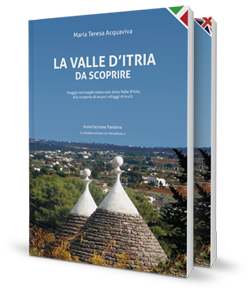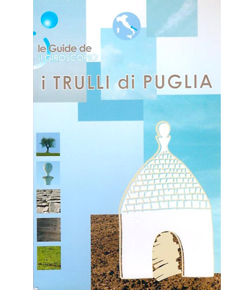Text translate by Emilio Acquaviva - Trainee
A solemn celebration takes place in July in Martina Franca in honor of the Patron saint Martin of Tours. For four days, sacred and civil ceremonies, a large fair, classical music in the squares on the harmonic chests, spectacular baroque illuminations, fireworks and Luna Park.
The holy knight, charity emblem,is also the patron saint of Martina Franca, where he is celebrated 3 times a year: march 17th "St. Martino del sacco" (sacco=plundering) , also called of Patrocinio, in memory of looting of town on 1799 and of protection promised by the saint to Martina Franca inhabitants, this feast was instituted in 1802; July 4th St. Martino dell' aia (aia=farmyard), the main feast dedicated to the saint, instituted in the first years of '700. Finally, San Martino delle sementi is the third commemoration that falls on 11 November, the oldest in which the death of the Saint Martin bishop of Tours, who died in 397 is commemorated. The most solemn of the three feasts is San Martino dell'Aia which generally the first weekend of July or the second is celebrated, if it falls after day 4, and which has become the religious and civil holiday of the Saint.
In 1712 a relic of San Martino arrived in Martina Franca, brought by a Capuchin friar, first placed in the church of Santa Maria d'Itria dei Cappuccini in the Valle d'Itria and then transferred, on July 4, in the Collegiate, the current Basilica . The then Duke of Martina Francesco II Caracciolo had a reliquary preserved in the chapel of the Treasure of the Basilica, where it is still located. July 4 is a very significant date because also in Tours, the city where the Holy Bishop is buried, the translation of the body of San Martino is celebrated in the apse of the first basilica of Tours. In 1755 the sacred rite of offering the candles to the Collegiate Church of San Martino was established in Martina Franca. The rite, which is still repeated, is strongly symbolic of the recognition of the then Università (City Hall) of Martina Franca of the religious feast and of the role of San Martino as protector and citizen intercessor. Every year the mayor leads the procession of candles from the Town Hall to the Basilica, where in his speech to the citizens he presents an account of Martina's state of "health" and heralds good intentions for the future.
During the 4 days of celebration, from Friday to Monday, the silver statues of the patron saints are publicly displayed in the church. In addition to San Martino, the less important patroness of the city is Comasia, a martyr buried in the catacomb of Sant'Agnese in Rome. His remains were granted by Pope Innocent X to the clergy and the city of Martina Franca in 1645. The presence of a holy body (or presumed so) in the city was crucial for the citizens: over time the cult took root and therefore Comasia is celebrated with San Martino as second civic protector.
The statues were carved by the silversmith Andrea De Blasio in the early 1700s in molten silver, chiseled and engraved with gilding; both statues retain some relics of the saints in the chest. The statues are exhibited to the faithful during the three local festivals. The precious statues are carried in procession on the Sunday of the summer patronal feast, while throughout the year they are preserved, with the Treasure of the Collegiate, enclosed in a large niche to the right of the main altar, open only during religious holidays.
A bit of Tradition
Popular imagination has transmitted many funny stories about the saints. There are those who say that San Martino and Santa Comasia are brothers. Woe if the statue of Santa Comasia is not carried in procession during the solemn patronal feast in the summer! The patroness Comasia could take revenge by making the statue of San Martino so heavy that it cannot be raised. About the name Comasia, known only in the Martina Franca area: the people, not knowing how to call the unknown saint, said: "come sia sia" (it's dialectal expression)! In this way the name Comasia was born according to tradition. But in reality in a document published on September 10 in Rome it is written in Latin: "Concession of the body of Santa Comasia martyr to the Chapter, clergy and land of Martina on September 10, 1645"
San Martino and Santa Comasia are often painted in the rural niches of Trulli or Masserie (farms) in the countryside of Martina Franca. San Martino, with its attributes, is like the Latin god Saturn who must protect the wheat crop. Comasia is like the Latin goddess Ceres, who must guarantee rain for the fields. The celebration, in July, of the patron San Martino involves all citizens of Martina and nearby cities. There are baroque illuminations, concerts that offer high level musical moments. In the past, during the summer patronal feast, all citizens who emigrated for work to experience this religious event with their family returned to Martina in July.













